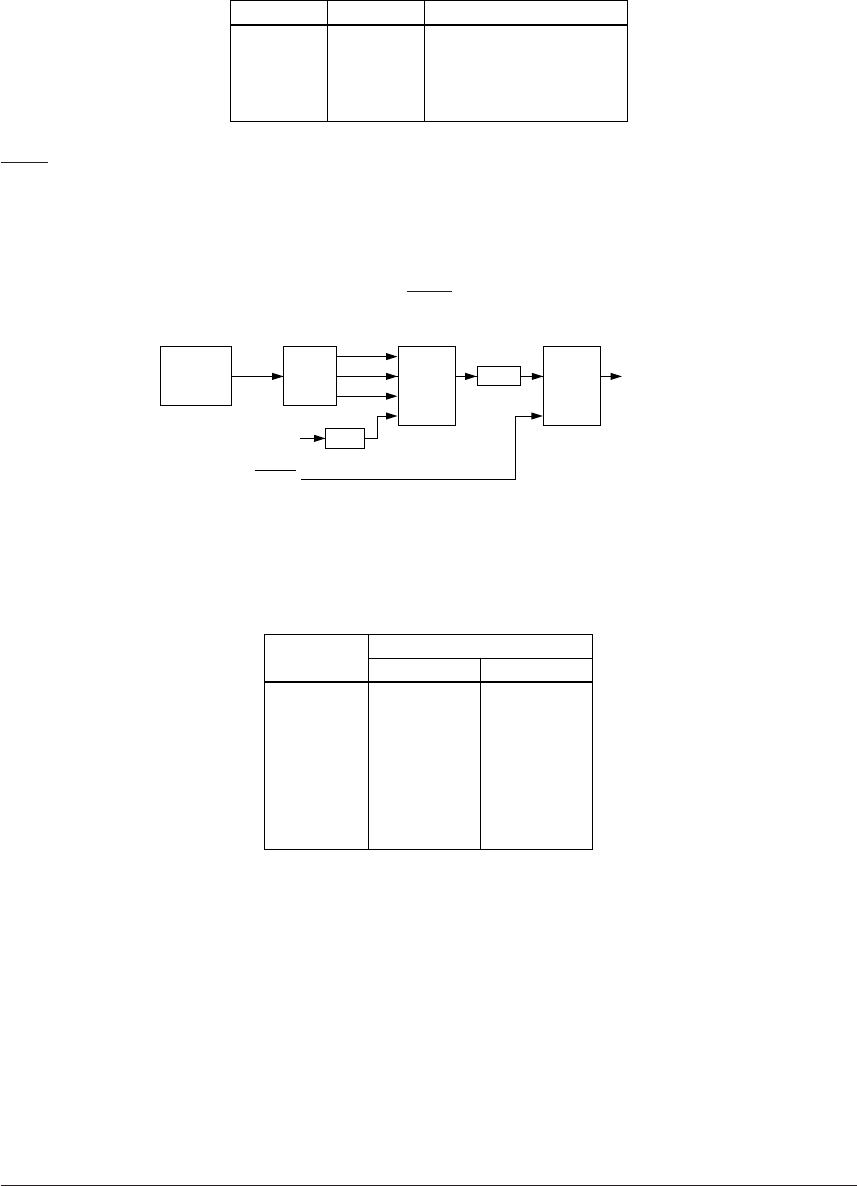
80 EPSON S1C63558 TECHNICAL MANUAL
CHAPTER 4: PERIPHERAL CIRCUITS AND OPERATION (Serial Interface)
4.11.4 Clock source
There are four clock sources and selection is made by setting the two bits of the clock source selection
register SCS0 and SCS1 as shown in table below.
Table 4.11.4.1 Clock source
SCS1
1
1
0
0
SCS0
1
0
1
0
Clock source
Programmable timer
f
OSC3 / 93 (2400 bps)
f
OSC3 / 372 (600 bps)
fOSC3 / 186 (1200 bps)
This register setting is invalid in clock synchronous slave mode and the external clock input from the
SCLK terminal is used.
When the "programmable timer" is selected, the programmable timer 1 underflow signal is divided by 1/
2 and this signal used as the clock source. With respect to the transfer rate setting, see "4.10 Program-
mable Timer". At initial reset, the synchronous clock is set to "f
OSC3/186".
Whichever clock is selected, the signal is further divided by 1/16 and then used as the synchronous clock.
Furthermore, external clock input is used as is for SCLK in clock synchronous slave mode.
fOSC3
1/93
1/372
1/186
1/16
Synchro-
nous clock
Programmable timer 1
underflow signal
SCLK
(Clock synchronous slave mode)
Divider Selector Selector
1/2
OSC3
oscillation
circuit
Fig. 4.11.4.1 Division of the synchronous clock
Table 4.11.4.2 shows an examples of transfer rates and OSC3 oscillation frequencies when the clock source
is set to programmable timer.
Table 4.11.4.2 OSC3 oscillation frequencies and transfer rates
Transfer rate
(bps)
9,600
4,800
2,400
1,200
600
300
150
f
OSC3
= 3.580 MHz
PSC1X
0 (1/1)
0 (1/1)
0 (1/1)
0 (1/1)
0 (1/1)
1 (1/4)
1 (1/4)
RLD1X
0CH
17H
2FH
5DH
BAH
5DH
BAH
When the demultiplied signal of the OSC3 oscillation circuit is made the clock source, it is necessary to
turn the OSC3 oscillation ON, prior to using the serial interface.
A time interval of several msec to several 10 msec, from the turning ON of the OSC3 oscillation circuit to
until the oscillation stabilizes, is necessary, due to the oscillation element that is used. Consequently, you
should allow an adequate waiting time after turning ON of the OSC3 oscillation, before starting transmit-
ting/receiving of serial interface. (The oscillation start time will vary somewhat depending on the
oscillator and on the externally attached parts. Refer to the oscillation start time example indicated in
Chapter 7, "Electrical Characteristics".)
At initial reset, the OSC3 oscillation circuit is set to OFF status.


















